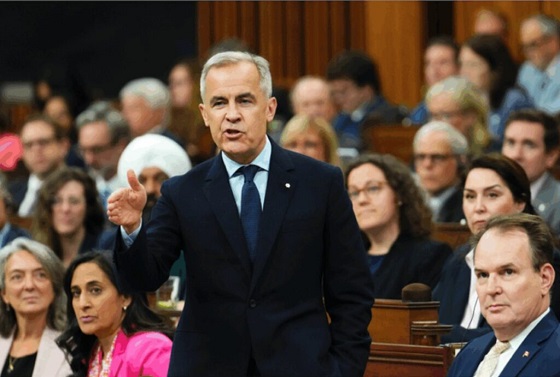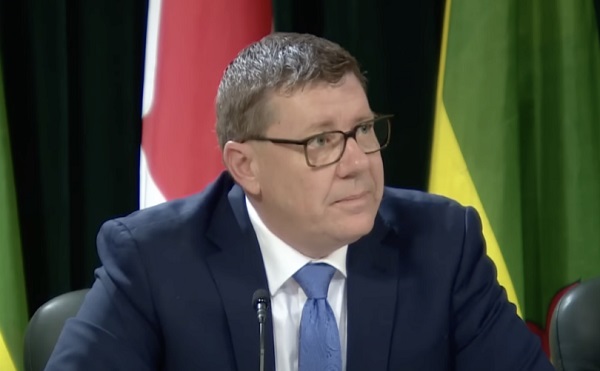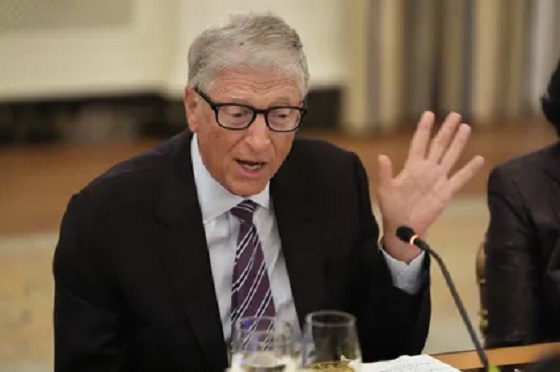Energy
When Vancouver reverses ban on natural gas appliances, it’s time to talk about energy choices

From EnergyNow.ca
By Stewart Muir of Resource Works
More News and Views From Resource Works Here
The Practicality of Energy Choice in Vancouver
Vancouver’s decision to reverse the ban on natural gas appliances in new homes should serve as the beginning of a necessary conversation about energy system choices
In a city like Vancouver, where the mountains meet the sea and the urban skyline reflects both our history and our aspirations, policy decisions are often a reflection of our values. Yet, sometimes, even the best intentions can lead us down a perilous path. The recent decision by the City of Vancouver to restore freedom of choice for heating water and space in our homes, reversing an earlier ban on natural gas, is a move I support.
Housing affordability was a major deciding factor, but to me this turn of events – one the nation is watching – also marks a step away from a simplistic and potentially regressive approach to climate action, one that could have stymied our efforts to decarbonize in a meaningful way.
Let me be clear: climate change is real, and the need to reduce emissions is urgent. However, the original gas ban, while well-intentioned, was not the answer. Banning natural gas from our homes might have seemed like a bold move, but it ignored the nuances of our energy system and the challenges we face in transitioning to a low-carbon future.
The gas ban was a decision that felt good for those deeply concerned about climate action; a personal stand against fossil fuels. But feelings alone do not build resilient energy systems, nor do they account for the complex interplay of technologies and fuels that will be necessary to achieve our climate goals. Natural gas, particularly when blended with renewable gases like hydrogen, can and should play a role in our energy future. The idea of banning it outright was akin to throwing the baby out with the bathwater.
Consider this: hydrogen, a zero-emissions fuel, is already the focus of enormous national and international investment. Canada is positioning itself as a leader in hydrogen production and technology, recognizing its potential to decarbonize sectors that are otherwise difficult to electrify. Banning natural gas infrastructure would have made it difficult, if not impossible, to integrate hydrogen into our energy mix when the technology matures.
Similarly, renewable natural gas, produced from organic waste, relies on the very distribution networks that a gas ban would have dismantled. The infrastructure for delivering gas to our homes is not a relic of the past but a vital component of our future energy system, one that could deliver clean, low-carbon fuels to millions of Canadians.
Let’s not forget the practical realities of energy demand. Suppose gas was revoked as an option for homes in Canada; the energy required to replace it would necessitate the entirety of our current solar and wind capacity several times over. This is not hyperbole—it’s a fact. And it doesn’t even account for the intermittency of these renewable sources, which means they cannot be relied upon to meet demand at all times.
In British Columbia, we’re already seeing the strain on our electricity system. We’ve become net importers of electricity, a situation that underscores the limits of our current infrastructure. As demand continues to rise—for electric vehicles, air conditioning, and the energy-hungry applications of artificial intelligence—our grid is buckling under the pressure. Tens of billions of dollars in upgrades are required, and these projects will take years to complete. Meanwhile, our neighboring provinces and states are facing similar challenges, leading to a regional energy crunch.
This diagram of Canada’s energy system provides, under close examination, a sober realization of how things work:

There is a lot to take in here, showing as it does the sources of all the energy in Canadian life (on the left) and how they flow into particular uses (right).
In grey shading on the right, the box labelled “Rejected Energy” represents energy that goes to waste. It is a staggering five times the amount of all types of energy used in our homes. I can understand that this area of high potential is hard to create excitement about. Nonetheless, it is a real source of ongoing progress, represented by ever more efficient ways of using fuels and upgrading equipment, and we aren’t talking about it.
Energy experts understand that banning a single type of energy without considering the broader system is not just imprudent; it’s dangerous. It could lead to shortages, higher costs, and ultimately, a failure to achieve our climate goals. Yet, I also recognize the appeal of actions that seem to offer immediate, tangible results. There’s a strong emotional pull in taking control of what happens in our own homes, in feeling like we’re doing our part.
This is why I’m calling for more energy education and diverse conversations that are constructive, respectful, and grounded in reality. We need to move beyond the tired narrative of “faceless corporations” versus the environment. The truth is, the people in both policy and industry are striving for the same outcome: a world with lower emissions and better outcomes for all.
The City of Vancouver’s decision to reverse the gas ban is a wise one, but it should be just the beginning. I urge the city to initiate a robust process of energy education, one that equips residents with the knowledge they need to make informed decisions about their energy use. And as a resident of this city, I am more than willing to take part in this vital conversation.
Our future depends on it.
Stewart Muir is the Founder and CEO of Resource Works.
Energy
Liberals Twisted Themselves Into Pretzels Over Their Own Pipeline MOU

From Energy Now
By Margareta Dovgal
Playing politics with pipelines is a time-honored Canadian tradition. Recent events in the House of Commons offered a delightful twist on the genre.
The Conservatives introduced a motion quoting the Liberals’ own pipeline promises laid out in the Memorandum of Understanding (MOU) with Alberta, nearly verbatim. The Liberals, true to form, killed it 196–139 with enthusiastic help from the NDP, Bloc, and Greens.
We all knew how this would end. Opposition motions like this never pass; no government, especially not one led by Mark Carney, is going to let the opposition dictate the agenda. There’s not much use feigning outrage that the Liberals voted it down. The more entertaining angle has been watching closely as Liberal MPs twist themselves into pretzels explaining why they had to vote “no” on a motion that cheers on a project they claim to support in principle.
Liberal MP Corey Hogan dismissed the motion as “game-playing” designed to “poke at people”.
And he’s absolutely right to call it a “trap” for the Liberals. But traps only work when you walk into them.
Indigenous Services Minister Mandy Gull-Masty deemed the motion an “immature waste of parliamentary time” and “clearly an insult towards Indigenous Peoples” because it didn’t include every clause of the original agreement. Energy Minister Tim Hodgson decried it as a “cynical ploy to divide us” that “cherry-picked” the MOU.
Yet the prize for the most tortured metaphor goes to the prime minister himself. Defending his vote against his own pipeline promise, Carney lectured the House that “you have to eat the entire meal, not just the appetizer.”
It’s a clever line, and it also reveals the problem. The “meal” Carney is serving is stuffed with conditions. Environmental targets or meaningful engagement with Indigenous communities aren’t unrealistic asks. A crippling industrial carbon price as a precondition might be though.
But the prime minister has already said the quiet part out loud.
Speaking in the House a few weeks ago, Carney admitted that the agreement creates “necessary conditions, but not sufficient conditions,” before explicitly stating: “We believe the government of British Columbia has to agree.”
There is the poison pill. Handing a de facto veto to a provincial government that has spent years fighting oil infrastructure is neither constitutionally required nor politically likely. Elevating B.C.’s “agreement” to a condition, which is something the MOU text itself carefully avoids doing, means that Carney has made his own “meal” effectively inedible.
Hodgson’s repeated emphasis that the Liberal caucus supports “the entire MOU, the entire MOU” only reinforces this theory.
This entire episode forces us to ask whether the MOU is a real plan to build a pipeline, or just a national unity play designed to cool down the separatist temperature in Alberta. My sense is that Ottawa knew they had to throw a bone to Premier Danielle Smith because the threat of the sovereignty movement is gaining real traction. But you can’t just create the pretense of negotiation to buy time.
With the MOU getting Smith boo’ed at her own party’s convention by the separatists, it’s debatable whether that bone was even an effective one to throw.
There is a way. The federal government has the jurisdiction. If they really wanted to, they could just do it, provided the duty to consult with and accommodate Indigenous peoples was satisfied. Keep in mind: no reasonable interpretation equates Section 35 of the Charter to a veto.
Instead, the MOU is baked with so many conditions that the Liberals have effectively laid the groundwork for how they’re going to fail.
With overly-hedged, rather cryptic messaging, Liberals have themselves given considerable weight to a cynical theory, that the MOU is a stalling tactic, not a foundation to get more Canadian oil to the markets it’s needed in. Maybe Hodgson is telling the truth, and caucus is unified because the radicals are satisfied that “the entire MOU” ensures that a new oil pipeline will never reach tidewater through BC.
So, hats off to the legislative affairs strategists in the Conservative caucus. The real test of Carney’s political power continues: can he force a caucus that prefers fantasy economics into a mold of economic literacy to deliver on the vision Canadians signed off on? Or will he be hamstrung trying to appease the radicals from within?
Margareta Dovgal is managing director of Resource Works Society.
Daily Caller
Paris Climate Deal Now Decade-Old Disaster


From the Daily Caller News Foundation
By Steve Milloy
The Paris Climate Accord was adopted 10 years ago this week. It’s been a decade of disaster that President Donald Trump is rightly trying again to end.
The stated purpose of the agreement was for countries to voluntarily cut emissions to avoid the average global temperature exceeding the (guessed at) pre-industrial temperature by 3.6°F (2°C) and preferably 2.7°F (1.5°C).
Since December 2015, the world spent an estimated $10 trillion trying to achieve the Paris goals. What has been accomplished? Instead of reducing global emissions, they have increased about 12 percent. While the increase in emissions is actually a good thing for the environment and humanity, spending $10 trillion in a failed effort to cut emissions just underscores the agreement’s waste, fraud and abuse.
As a nonprofit, we are dependent on the generosity of our readers.
Please consider making a small donation of any amount here.
Thank you!
But wasting $10 trillion is only the tip of the iceberg.
The effort to cut emissions was largely based on forcing industrial countries to replace their tried-and-true fossil fuel-based energy systems with not-ready-for-prime-time wind, solar and battery-based systems. This forced transition has driven up energy costs and made energy systems less reliable. The result of that has been economy-crippling deindustrialization in former powerhouses of Germany and Britain.
And it gets worse.
European nations imagined they could reduce their carbon footprint by outsourcing their coal and natural gas needs to Russia. That outsourcing enriched Russia and made the European economy dependent on Russia for energy. That vulnerability, in turn, and a weak President Joe Biden encouraged Vladimir Putin to invade Ukraine.
The result of that has been more than one million killed and wounded, the mass destruction of Ukraine worth more than $500 billion so far and the inestimable cost of global destabilization. Europe will have to spend hundreds of billions more on defense, and U.S. taxpayers have been forced to spend hundreds of billions on arms for Ukraine. Putin has even raised the specter of using nuclear weapons.
President Barack Obama unconstitutionally tried to impose the Paris agreement on the U.S. as an Executive agreement rather than a treaty ratified by the U.S. Senate. Although Trump terminated the Executive agreement during his first administration, President Joe Biden rejoined the agreement soon after taking office, pledging to double Obama’s emissions cuts pledge to 50 percent below 2005 levels by 2030.
Biden’s emissions pledge was an impetus for the 2022 Inflation Reduction Act that allocated $1.2 trillion in spending for what Trump labeled as the Green New Scam. Although Trump’s One Big Beautiful Bill Act reduced that spending by about $500 billion and he is trying to reduce it further through Executive action, much of that money was used in an effort to buy the 2024 election for Democrats. The rest has been and will be used to wreck our electricity grid with dangerous, national security-compromising wind, solar and battery equipment from Communists China.
Then there’s this. At the Paris climate conference in 2015, U.S. Secretary of State John Kerry stated quite clearly that emissions cuts by the U.S. and other industrial countries were meaningless and would accomplish nothing since the developing world’s emissions would be increasing.
Finally, there is the climate realism aspect to all this. After the Paris agreement was signed and despite the increase in emissions, the average global temperature declined during the years from 2016 to 2022, per NOAA data.
The super El Nino experienced during 2023-2024 caused a temporary temperature spike. La Nina conditions have now returned the average global temperature to below the 2015-2016 level, per NASA satellite data. The overarching point is that any “global warming” that occurred over the past 40 years is actually associated with the natural El Nino-La Nina cycle, not emissions.
The Paris agreement has been all pain and no gain. Moreover, there was never any need for the agreement in the first place. A big thanks to President Trump for pulling us out again.
Steve Milloy is a biostatistician and lawyer. He posts on X at @JunkScience.
-

 Alberta14 hours ago
Alberta14 hours agoDanielle Smith slams Skate Canada for stopping events in Alberta over ban on men in women’s sports
-

 Health1 day ago
Health1 day agoSaskatchewan woman approved for euthanasia urged to seek medical help in Canada rather than US
-

 Indigenous1 day ago
Indigenous1 day agoResidential school burials controversy continues to fuel wave of church arsons, new data suggests
-

 International1 day ago
International1 day agoFBI didn’t think it had cause to raid Trump but DOJ did it anyway
-

 Health1 day ago
Health1 day agoCanadian gov’t considers sharing census data on gender-confused children
-

 Crime16 hours ago
Crime16 hours agoThe Uncomfortable Demographics of Islamist Bloodshed—and Why “Islamophobia” Deflection Increases the Threat
-

 Energy19 hours ago
Energy19 hours agoLiberals Twisted Themselves Into Pretzels Over Their Own Pipeline MOU
-

 Business2 days ago
Business2 days agoCOP30 finally admits what resource workers already knew: prosperity and lower emissions must go hand in hand




